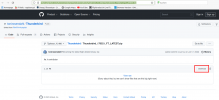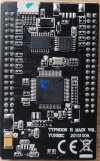h-elsner
Premium Pilot
- Joined
- Mar 23, 2016
- Messages
- 1,948
- Reaction score
- 1,642
- Location
- Bavaria / Germany
- Website
- h-elsner.mooo.com
Sorry, The link in documentation is too old. The latest FW and default parameter file is here: Thunderbird/Thunderbird_170521_FT_LATEST.zip at Typhoon_H_480 · tonirosendahl/Thunderbird
To download use the button:

br HE
To download use the button:

br HE






